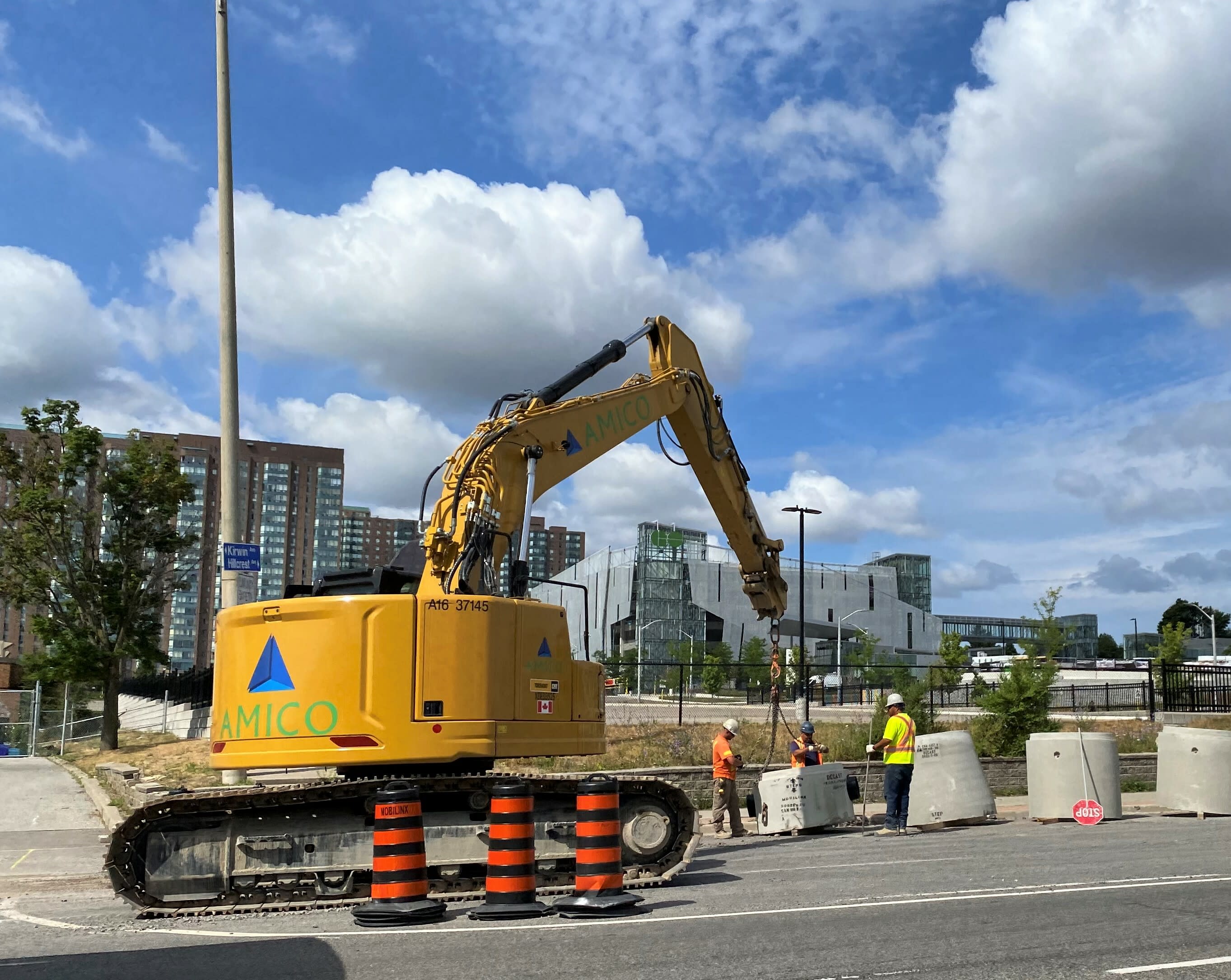Utility work is happening on Hurontario ahead of the new LRT
How utility work along Hurontario Street will help support communities in the future.
Sep 14, 2022
Making sure utilities are working properly is a big part of the puzzle as construction progresses on the Hazel McCallion Line (also known as the Hurontario LRT).
Crews are upgrading and relocating utilities (like sewers and telecommunications cables) as part of the construction of the new transit line.
This is essential for widening the roads and making room for the brand-new LRT line.
Wet utilities vs dry utilities
This work includes both “dry utilities,” namely the installation of electric, and telecommunications infrastructure, and “wet utilities,” which include sanitary and storm sewers, plus watermains.
These are all the things that residents depend on to do everything from flush the toilet, to watch Netflix and even prevent flooding when it rains.
One of the areas where a lot of this work is taking place is between Lakeshore Road East and the Queen Elizabeth Way (QEW).
Mississauga South
Mississauga South presents unique challenges when performing utility works, as the roadway is much narrower than other parts north along Hurontario Street.
As a result, crews must take extra steps to ensure work is accomplished safely and in a timely manner while minimizing impacts.
Mississauga South subdrain installation. (Metrolinx image)
Wet Utility Work
The installation of upgraded watermains, as well as storm and sanitary sewers continues to progress steadily along Hurontario Street from Eaglewood Boulevard to the QEW.
The work area has now shifted from the east side of Hurontario Street to the west, between Park Street and Inglewood Drive. Across the board, work has been happening on the east side of Hurontario Street and then shifting to the west side of the roadway in Mississauga South.
This is to reduce the impact on traffic in areas where the road is narrower.
Dry Utility Work
Directional drilling to create underground Alectra duct banks that cross Hurontario will be taking place in the fall of 2022 to support a switch over to newly upgraded power service. The relocation of power lines along Hurontario Street will allow for road widening and sufficient clearances for the overhead catenary system (OCS).
Dry utility cable pulling in Mississauga Centre area. (Metrolinx image)
An OCS is a system of overhead wires used to supply electricity to a train, streetcar, or light rail vehicle.
“One of the many benefits of this work is that a significant amount of wiring and cables are being moved underground – improving the appearance of the local area, said Abdul Kader Azzam, project manager of dry utilities at Mobilinx, the constructor for the Hurontario LRT.
“This will also help prevent damages and offer protection to power lines from strong winds and other harsh weather conditions,” Azzam said.
These new power lines will serve Mississauga for years to come. They’ll require minimal maintenance and will also be able to withstand potential impacts from climate change.
Other ongoing construction
Utility works have also been taking place in Cooksville, Mississauga Centre, Mississauga North and Brampton. Some of these works include:
Cooksville
- The installation of watermain, storm, and sanitary systems in various areas along the west side of Hurontario between Harborn Road and Matthews Gate, taking place now.
Dry utility relocations in North Mississauga. (Metrolinx photo)
Brampton
- Construction staging expands along Hurontario Street as utility relocations, storm installations, ductbank installations and road widening works continue.
- This is in preparation for guideway and track installations that will take place in the centre of the roadway.
Watermain installations at OMSF near Kennedy Road in Brampton. (Metrolinx image)
Ongoing utility works will continue into the new year across Hurontario Street. Once complete, this will improve the reliability and appearance of utilities for decades to come.
by Maria Khan Metrolinx communications senior advisor
